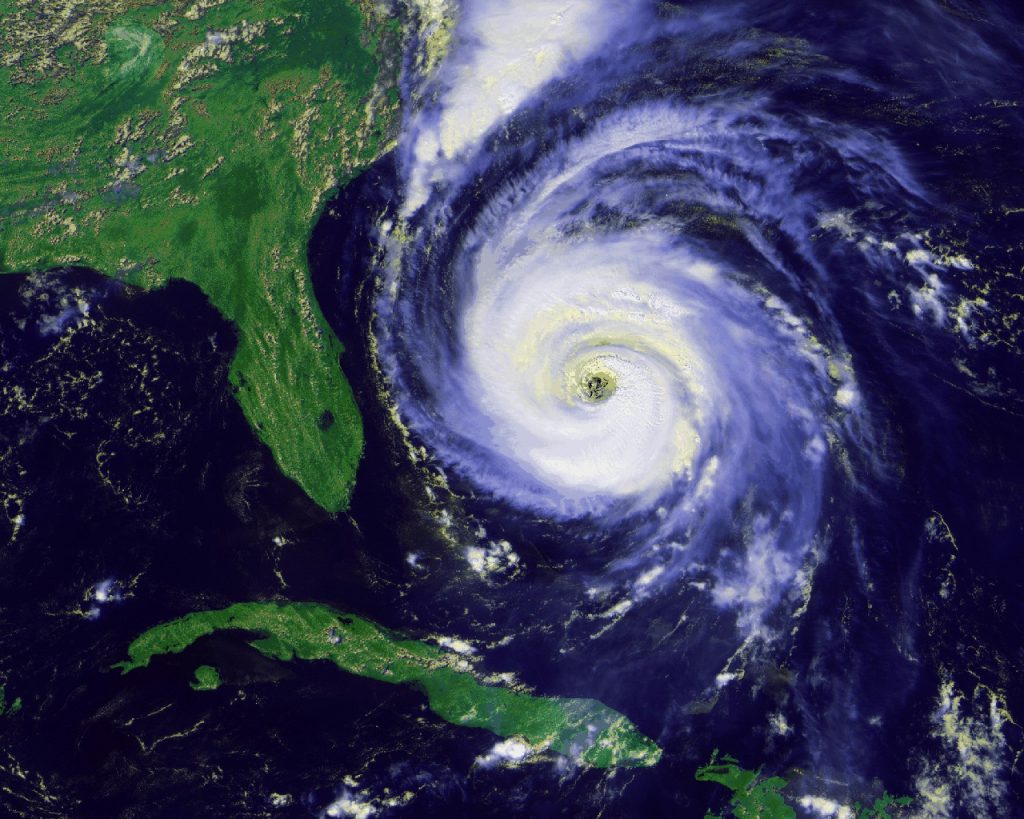Water connected to Hurricane Joaquin has converged with another slow-moving storm in the East causing torrential rain and flooding. On Saturday, 24-hour rainfall totals in parts of North Carolina, South Carolina and Georgia reached levels likely to occur only once every 100 years, with some regions even experiencing rainfall amounts expected only once every 1000 years. And more rain is coming.
The severity of the combined storms has many links to climate change. The heaviest rainfall events have become heavier and more frequent across the US, due to an increase in water vapor in the air made possible by warmer temperatures.
Sea surface temperatures in the region where Hurricane Joaquin underwent rapid intensification are currently the warmest ever recorded. Hurricanes are fueled by warm water, contributing to an increase in the frequency of the most intense hurricanes, and an exponential increase in damage. Virtually every measure of hurricane activity in the Atlantic has increased substantially since the 1970s, due to the combination of human-caused climate change and natural variation.
Simply put, climate change is causing more destructive precipitation events and hurricanes in the Northwest Atlantic. For more detailed information see Climate Nexus’ Hurricane backgrounder.
Heavy precipitation events across the US are increasing by large amounts.
-
One of the clearest changes in the weather across the US is the increasing frequency and intensity of heavy precipitation. In the past century we have witnessed a 20 percent increase in the amount of precipitation falling in the heaviest downpours.
-
Warmer air can contain more water vapor than cooler air, and studies show the amount of water vapor in the atmosphere has in fact increased over both land and oceans.
Hurricane-related precipitation in the Southeast has been increasing.
-
Extreme precipitation from tropical cyclones in the Southeast has been increasing over the past few decades, and the contribution of hurricane precipitation to overall extreme precipitation has been significantly increasing by approximately 5-10 percent per decade in the southeastern Atlantic coastal states.
Rising sea levels increase the probability of storm-induced surges and flooding.
-
As the oceans absorb more heat they expand, elevating sea levels. And as glaciers and ice sheets melt, global sea level is rising, giving hurricane storm surge a higher platform from which to run up onto land.
-
The Atlantic coast is a hotspot of accelerated sea-level rise and flooding. Many East Coast cities have regional rates of sea level rise that are substantially above the global rate due to land subsidenceand differences in geography which amplify the local effect of global sea level rise.
-
The New York harbor, for example—one of the areas most damaged during Superstorm Sandy—has experienced nearly a foot of sea level rise over the last century, compared to eight inches globally. Due to global warming, the risk of major New York City and New Jersey coastal flooding—like that observed during Superstorm Sandy—has increased from once every 500 years, to once every 25.
Climate change loads hurricanes with additional moisture, intensifying rainfall.
-
Hurricane Irene (2011) brought greater than five inches in total and sometimes two to three inches per hour in some locations, leading to extreme flooding like the 500-year Schoharie Creek flood in New York.
-
Human-caused warming meant Hurricanes Katrina (2005) and Ivan (2004) also carried significantly more rainfall, (6 to 8 percent more, relative to 1970). That increase may have contributed to the breach of the levees in New Orleans.
-
Warming air is projected to increase hurricane precipitation rates globallyby another 20 percent before the end of the century, leading to worse flooding worldwide.
Rising sea surface temperatures increase frequency of most severe hurricanes.
-
It is “virtually certain” that the intensity (or maximum sustained wind speed) of the strongest hurricanes has increased in the North Atlantic since 1970 due tohigher sea surface temperatures where Atlantic hurricanes form.
-
The size of and rate at which North Atlantic hurricanes intensify have also increased. Climate models predict that the most extreme storms will continue to increase in frequency.
Hurricane loss and damage is skyrocketing.
-
In the U.S., hurricanes accounted forseven out of ten of the costliest natural disasters from 1980 to 2014, with the top two occurring in the last 10 years.
-
Hurricane Katrina tops the list with 1,322 fatalities and overall losses of $125 billion. Superstorm Sandy is second with 127 fatalities and $65 billion in losses.
-
Potential changes in damages are greatest in the North Atlantic basin, where model averages predict that a 2.5°C increase in global surface air temperature would increase hurricane damages by 63 percent.
-
The Eastern Seaboard’s growing population and dense infrastructure increase exposure to damage, but that is countered by vastly improved resilience (better building codes, better long range weather forecasting, etc). This means the overall damage trend cannot be attributed solely to changes in population or wealth and that climate change is responsible for some of the trend.


